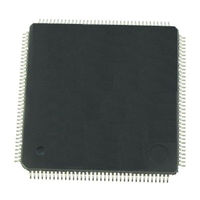ST ST10F276Z5 Manuals
Manuals and User Guides for ST ST10F276Z5. We have 1 ST ST10F276Z5 manual available for free PDF download: User Manual
ST ST10F276Z5 User Manual (564 pages)
High performance 16-bit microcontrollers
Brand: ST
|
Category: Microcontrollers
|
Size: 22 MB
Table of Contents
-
-
-
-
-
-
-
MAC Features82
-
-
Data Limiter88
-
Repeat Unit89
-
-
-
-
Trap Functions128
-
Hardware Traps129
-
Software Traps129
-
MAC Interrupt132
-
-
Parallel Ports
134 -
Dedicated Pins
179 -
-
Single Chip Mode181
-
-
-
READY Polarity194
-
EBC Idle State203
-
EA Functionality213
-
-
-
Timer Block GPT1215
-
Timer Block GPT2232
-
-
-
-
-
-
Watchdog Timer
297 -
-
-
Booting Steps305
-
-
Features313
-
-
-
Activation320
-
Memory Mapping320
-
Interrupts320
-
Watchdog321
-
EMUCON Register322
-
Example323
-
-
-
CAPCOM Timers329
-
Capture Mode336
-
Compare Modes336
-
Compare Mode 0337
-
Compare Mode 1338
-
Compare Mode 2339
-
Compare Mode 3340
-
-
Operating Modes347
-
Burst Mode349
-
Single Shot Mode350
-
-
Operating Modes359
-
Burst Mode361
-
Single Shot Mode362
-
-
-
Calibration383
-
-
I 2 C Interface
392-
Main Features392
-
Interrupts400
-
-
CAN Modules
410-
Interrupt413
-
Clock Prescaling416
-
Block Diagram418
-
Operating Modes418
-
Test Mode420
-
Silent Mode420
-
Loop Back Mode420
-
Basic Mode422
-
CAN Application444
-
Real Time Clock
464-
RTC Registers466
-
System Reset
472-
Input Filter472
-
Software Reset483
-
Reset Circuitry490
-
Reset Summary495
-
-
-
Idle Mode503
-
Power down Mode504
-
Down Mode504
-
Stand-By Mode509
-
-
-
Register Set
515-
Special Notes542
-
-
Stack Operations547
-
Register Banking551
-
Advertisement
Advertisement
